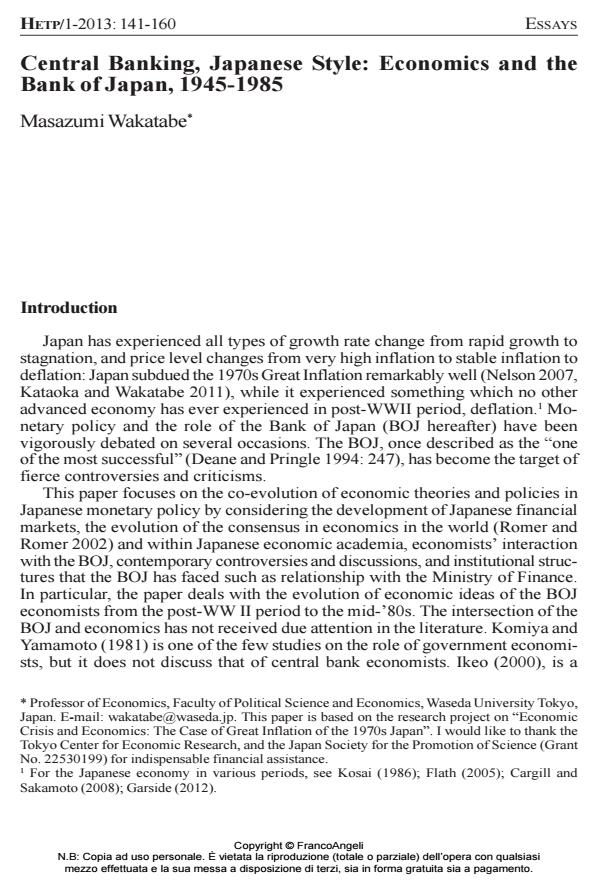Central Banking, Japanese Style: Economics and the Bank of Japan, 1945-1985
Journal title HISTORY OF ECONOMIC THOUGHT AND POLICY
Author/s Masazumi Wakatabe
Publishing Year 2013 Issue 2013/1
Language English Pages 20 P. 141-160 File size 109 KB
DOI 10.3280/SPE2013-001008
DOI is like a bar code for intellectual property: to have more infomation
click here
Below, you can see the article first page
If you want to buy this article in PDF format, you can do it, following the instructions to buy download credits

FrancoAngeli is member of Publishers International Linking Association, Inc (PILA), a not-for-profit association which run the CrossRef service enabling links to and from online scholarly content.
The paper deals with the relationship between economics and monetary policy from 1945 to 1984, conducted by the Bank of Japan. During the period Japan has experienced almost all types of growth rate change from high inflation to disinflation, and the monetary policy of the BOJ was discussed, and sometimes criticized. The paper shows that the behavior of the BOJ has been trying to be consistent with its particular interpretation of the policy objective, prescriptions, and past history as well as its bureaucratic concern over its own survival as an organization. However, this does not mean that there has been no conflict of ideas within the BOJ. Despite its attempt to portray itself as a unified entity, there have been several strands of thought within it, which evolved historically.
Keywords: The Bank of Japan, Japanese Economy, History of Economics in Japan
Jel codes: B20, E58, N15
Masazumi Wakatabe, Central Banking, Japanese Style: Economics and the Bank of Japan, 1945-1985 in "HISTORY OF ECONOMIC THOUGHT AND POLICY" 1/2013, pp 141-160, DOI: 10.3280/SPE2013-001008